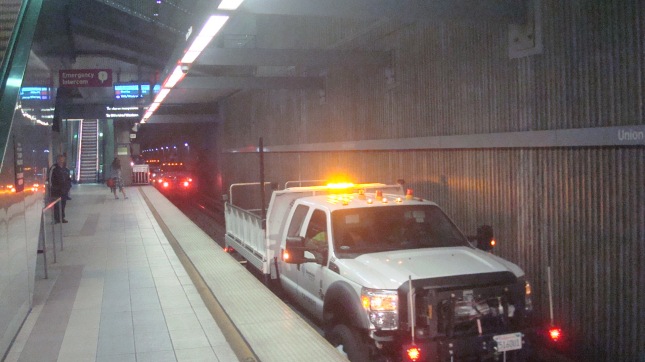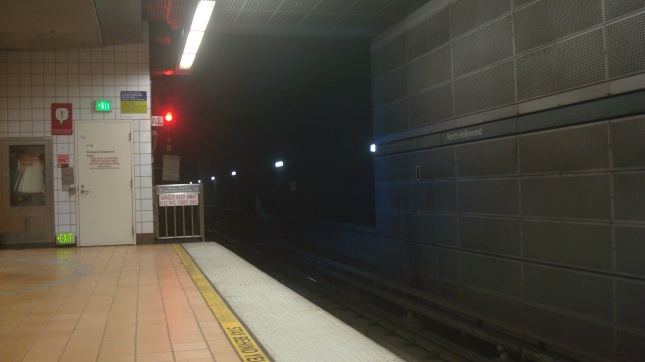
There was a night, maybe a couple years ago, when I was going home after visiting a friend. I was at a Red Line station, waiting for the train to come. There were probably about twenty or thirty people standing on the platform. But before the train showed up, an interesting procession emerged from the tunnel. A group of vehicles rolled slowly out of the darkness and into the light. One of them was a flatbed truck with a few guys in orange and yellow vests riding along. The people on the platform called and waved to them. They waved back. The truck kept rolling along, and so did the rest of the vehicles in the caravan, and in a minute or two they were out of sight.
Don’t ask me why, but after that happened I kept hoping I’d catch another glimpse of these workers and their machines. It’s probably a sign of how dull my life is that I get excited about seeing an MTA maintenance crew. But I guess part of why this caught my attention was that I’d never really thought about who kept the subways running. The city we live in is woven together by massive infrastructure networks, but most of us rarely think about how they’re maintained. We just want things to work, and we get ticked off when they don’t. But most of us are completely clueless about the massive effort it takes to keep LA running day in and day out.
So I kept hoping I’d catch another glimpse of the workers who maintain the trains. And since then, whenever it happened I snapped a few photos. As far as I can tell, most subway maintenance is done at night. These people spend hours rolling around in shadowy tunnels doing the many large and small jobs it takes to keep the trains running.
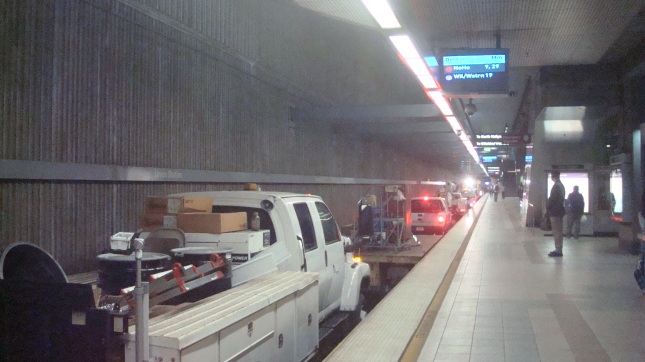
A caravan of maintenance trucks.
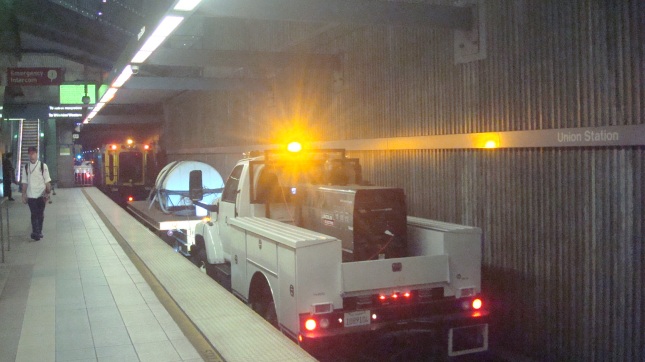
Another shot of maintenance trucks.
One night I got a shot of this….
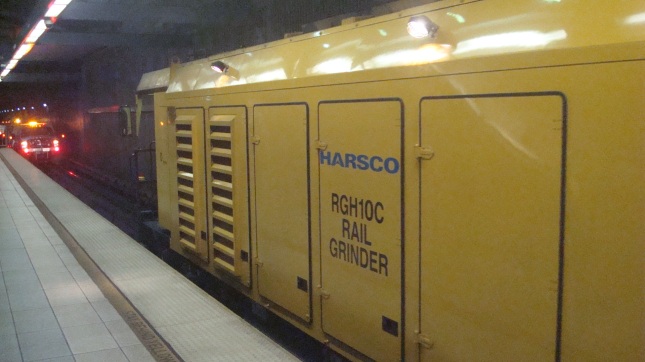
A rail grinder.
I’d never seen a rail grinder. I didn’t even know they existed. But they’re routinely used by rail lines all over the world to maintain tracks and increase their lifespan. I went looking on YouTube and found a video. Interestingly, there are dozens available. (I guess there are a lot of folks out there whose lives are as dull as mine.) The model you see here is different from the one I saw, but it gives you an idea of what these things look like in action.
And if you want to find out more about what rail grinders are and how they work, here’s the article from Wikipedia.
Last weekend I was making my way down the stairs at the North Hollywood station and saw a couple of trucks on the track and some workers hanging out. I pulled out my camera and started taking pictures. Then I thought, why not ask them what they’re doing? Turns out they weren’t doing maintenance, they were installing the hardware to make cell phone access available on the subway. I asked them if I could take their picture, and they said yeah.
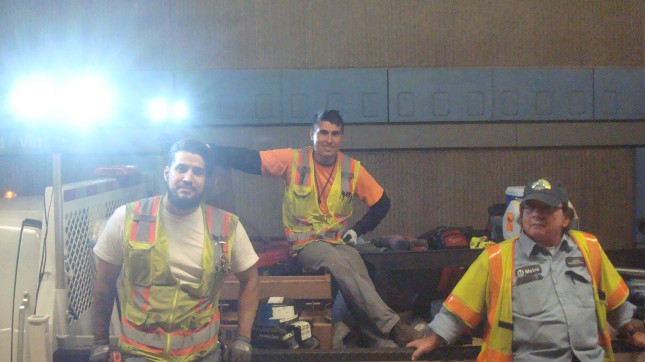
Here are the rolls of cable they’re installing.
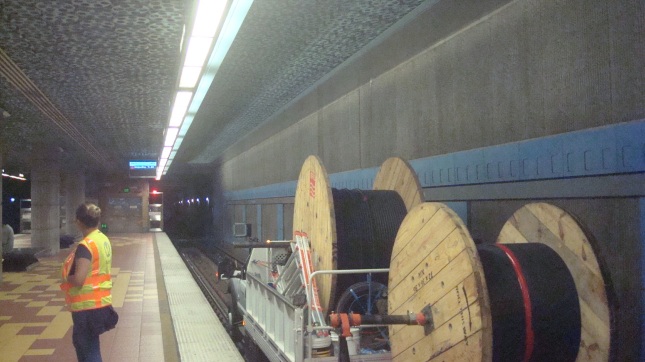
The point of all this being, this stuff doesn’t happen by magic. So many of the things we rely on every day, subways, cell phones, roads, sidewalks, TVs and water taps, are only there because people put them together and people keep them maintained. Most of the time the folks who do all these jobs are completely invisible to us. But I think it’s good to remind ourselves that they’re out there. They make the city work.
